Community 'benefit' or 'slaughtered' land? What we know about the White Pond development
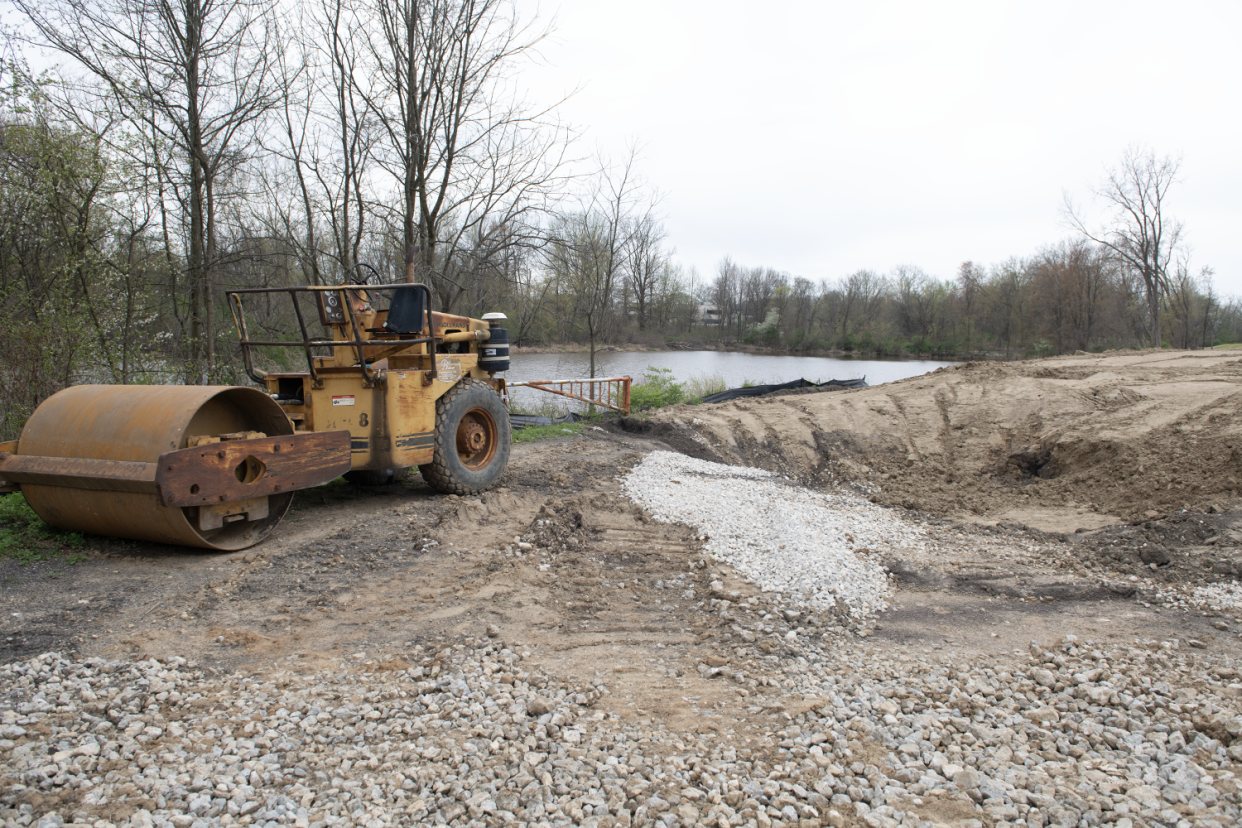
Developer Triton Property Ventures is grading land and about a week away from laying slab foundations for ranch homes and townhomes at White Pond Reserve in Akron.
The first phase of construction at the development, east of Interstate 77 and west of White Pond Drive, comes 18 years after the city of Akron first purchased the land and nearly a year and a half after City Council narrowly approved the development and land sale to Triton by a 7-6 vote.
Alan Gaffney, Triton’s president and COO, showed a Beacon Journal reporter and photographer the 64-acre property, highlighting natural features such as lapping pond water and deer prancing in the distance. But he also mentioned the possibility of an ice cream shop and café that could come later.
The entire project could eventually include about 22 acres of building space and roughly another 7 acres of streets and other infrastructure. The development could cost $50 million to $55 million total, Gaffney said, adding that he is hoping to complete it for less if possible.
That leaves the site’s wetland habitat, including ponds, he said.
“Effectively, we're going to have 30-plus acres of natural area here that will be here as long as we own it,” he said.
As the project moves forward, opposition to it remains. One local resident with a decades-long career background in planning, Mary Deal, stated: “There are so many errors and miscues here that it might make a case study in how not to plan.”
Much of the controversy surrounds the removal of flora and habitat for fauna but also concerns about potential flooding and toxic chemicals that were formerly found on the site.
“There’s always a little bit of controversy any time you're trying to do something new,” Gaffney said. “But we think in the end, this will net out to be a benefit for the whole community.”
What's included in the White Pond Reserve development?
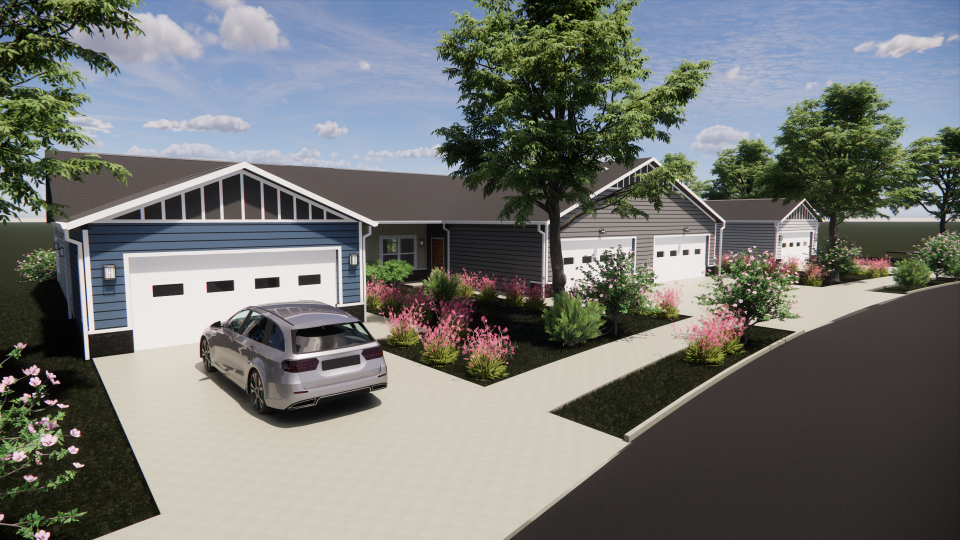
The first phase of the White Pond Reserve development will include 98 townhomes and 45 ranch homes for rent, Gaffney said.
The average unit will be about 1,600 square feet, and some larger three-bedroom townhomes will be closer to 2,100 square feet, he said, adding that leases will potentially range from $1,900 to $2,100 per month.
Gaffney said he plans for the construction of most of the building structures to be completed by the end of 2024 with interior work to progress through the winter.
A phase to follow could include about another 70 units, including townhomes and ranch homes, on the west side of the property, pending permitting such as building permits from the city of Akron and Summit County and a sewer permit from the Ohio Environmental Protection Agency (EPA), Gaffney said. Construction of those units could start either this year or next year, he said.
White Pond Reserve plans to provide tenants with walking trails, a dog park and a bocce ball court, Gaffney added.
A third phase could include construction of commercial units, such as restaurants and retail, and would require further permits that Gaffney said his team tentatively plans to apply for in 2025.
What is the potential economic impact of the project?
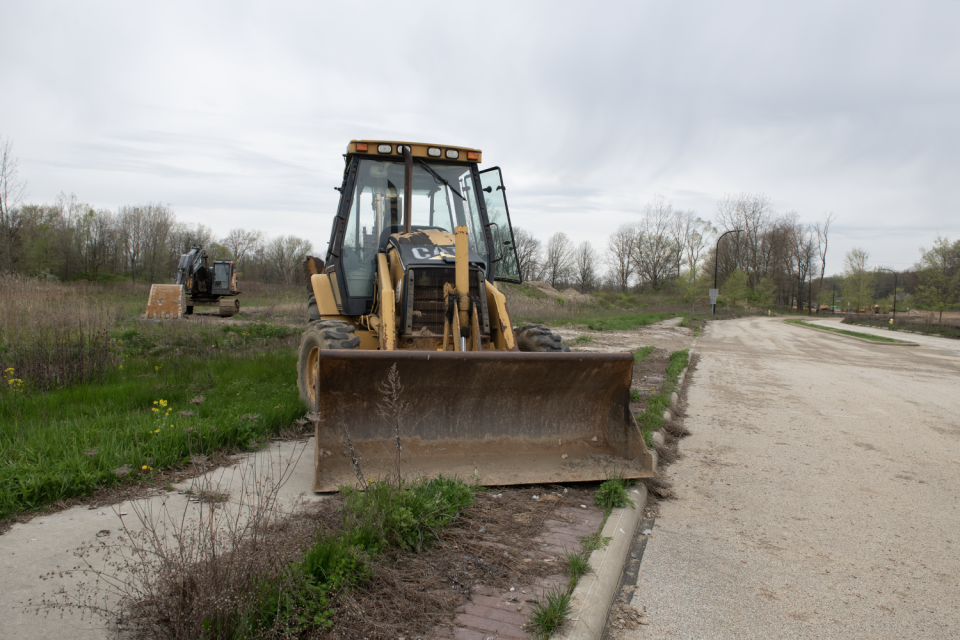
The Beacon Journal previously reported that, in accordance with a citywide tax abatement program, neither the developer nor residents would need to pay property taxes for 15 years, though property tax would be collected from commercial portions of the property over that period.
After the project is complete, property tax revenue and tax increment financing revenue collected for the next 30 years would go toward Akron Public Schools and the Public Arts Council, the Beacon reported. The school district would receive $8.8 million, and the arts council would receive $200,000, according to the news outlet.
In April, city of Akron spokeswoman Stephanie Marsh said these estimates will likely change, but probably not to a great extent, once the city receives the project’s final approved plans.
What is the debate around wildlife as it relates to this project?
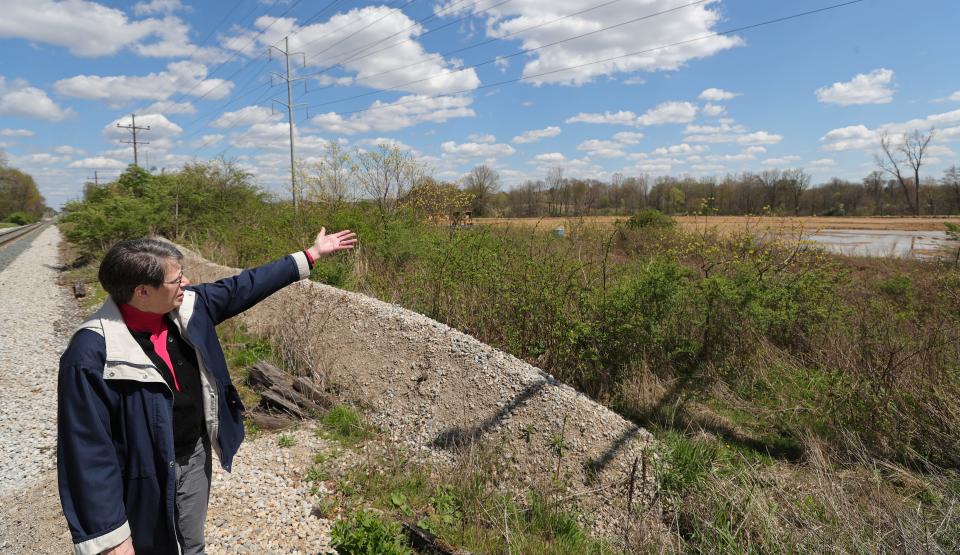
A month after Akron City Council approved the development in December 2022, nonprofit environmental group LEAD for Pollinators sued the city to halt the development.
The developer began timbering while the case was moving through the Summit County Common Pleas Court. LEAD for Pollinators amended its suit to include White Pond Reserve, LLC — a subsidiary of Triton Property Ventures — and filed a restraining order to stop White Pond Reserve from cutting down trees and performing construction.
By the end of March, both sides of the case agreed that the case was moot, and LEAD for Pollinators’ attorney filed a notice of dismissal.
LEAD for Pollinators Executive Director Michele Colopy said “the court process delayed saving the land, so that's why the court case pretty much stopped.”
“The land had been slaughtered, murdered, decimated,” Colopy said.
One of the issues that Colopy said she sees with the development is that the removal of trees takes away a possible habitat for bats. The environment could have supported endangered bats.
In 2023, cave expert Dr. Hazel Barton found bat guano while surveying a nearby cave with her then-students at the University of Akron. At the time, Barton was associate dean for research and graduate studies at UA’s Buchtel College of Arts and Sciences. (She has since joined the University of Alabama as Loper Endowed Professor of Geological Sciences.)
Exactly which bat species were using the cave, just north of White Pond Reserve in Fairlawn Heights, is presently unclear, Barton said, but she added that genetic testing could determine that.
“If there are [currently] bats in there, I'm sure they're using the wetlands as a foraging habitat,” she said.
Some bat species can migrate for hundreds of miles, Barton said.
“But bats tend to have a certain location — certain species will have a certain location that they return to again and again and again,” she said. “So, if there is disruption or damage to that location, then they have to find a new habitat.”
“An analogy is moving into a big city and trying to find rent you can afford,” Barton said.
Standing near trees that remain around the site's ponds, Gaffney said his team submitted a planting and landscaping plan to the city of Akron.
“In fact, the city arborist has told us that our canopy, when we’re done, will be above the average of Akron for residential areas — quite a bit above,” he said.
Triton also donated $15,000 to the city’s tree fund and plans to install native species at the site, Gaffney said.
How will structural issues be prevented at White Pond Reserve?
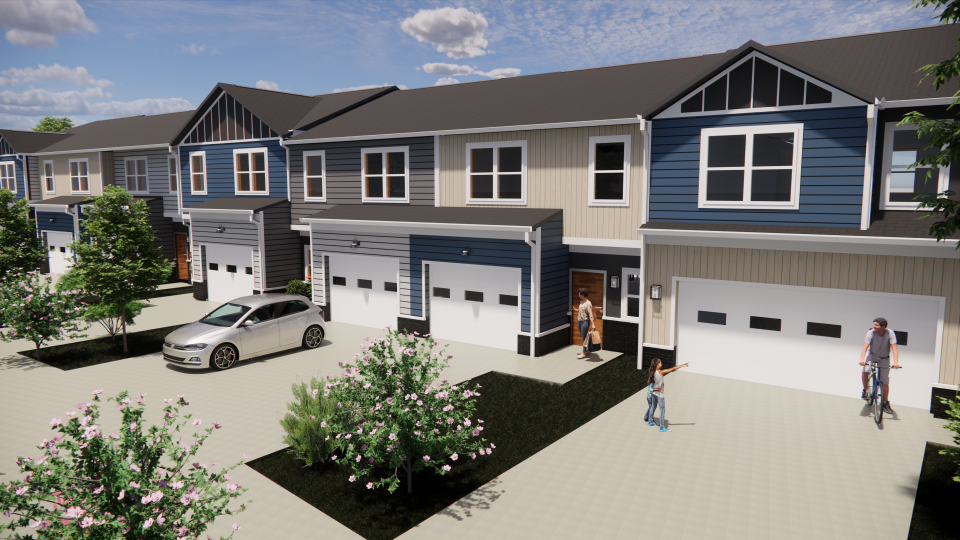
A document from the city of Akron said the site is “a remote outlier of the historical Copley Swamp.” The property has mostly Carlisle soils, which are “nearly level, poorly-drained soils,” according to the document.
Gaffney said the site's ponds were formerly peat bogs that were excavated and never been filled back in, and they have been collecting rainwater for decades. (None of these ponds are the namesake White Pond, which is to the south along White Pond Drive and west of I-77.)
Brad Beckert, the city of Akron’s business retention and expansion manager, said city officials found peat and muck when they bored soil on the property multiple times.
“The soil was just not very conducive for a lot of things structurally,” Beckert said, adding that structures and roadways can shift in those soils.
But proper engineering, such as with stone, cement or a polymer called geogrid, can resolve issues, he said.
Deal, whose career in planning has included work with the Northeast Ohio Areawide Coordinating Agency, said the site is a “really troublesome piece of property” for development. She pointed to city documents and comments from city officials that said the city was selling 29 acres of “developable” land.
Beckert said the word “developable” in this context refers to land that the city could single-handedly sell to Triton without the developer needing to seek permission other government agencies, such as the EPA or U.S. Army Corps of Engineers, to develop on the site's ponds.
Draining the ponds and building on that land could be structurally possible, Gaffney said, but he said he wants to keep them as natural features.
“Could you technically develop on this?” he asked at the site, pointing to a pond. “Yes, you could. But it would be just more costly.”
How will flooding be prevented in the neighborhood?
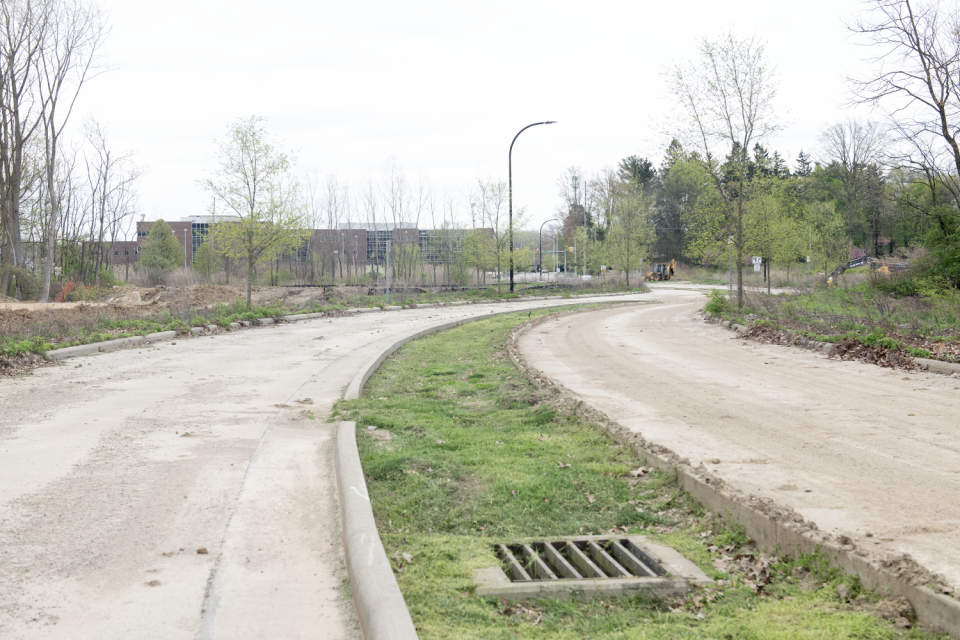
Colopy raised flooding of the development as a concern, given the area’s natural environmental conditions and water that flows downhill from the north.
As rainwater flows south from the Fairlawn Heights neighborhood, the Copley Swamp filters water, collects stormwater runoff and prevents flooding, she said.
“And we have taken that free environmental service away from this neighborhood and from the community,” Colopy said. “And eventually, water will win. I don't care how much engineering you do. Water will win.”
Deal said it’s an issue that impervious surfaces such as sidewalks and parking lots are being built on the Carlisle soils and downhill from Fairlawn Heights.
Brandon Andresen, a stormwater specialist with the Summit Soil & Water Conservation District (SSWCD), addressed stormwater with the Beacon Journal via email. He said the majority of stormwater coming into the area is from the west-northwest and “circumvents the development area by traveling through the undisturbed and natural areas of the site.”
Triton will install sanitary and storm sewers throughout the development to connect to Akron’s city infrastructure, Gaffney said.
How are water and soil quality being managed at White Pond Reserve?
In 2014, URS Corporation, an engineering, design and construction firm, performed an assessment of the site, finding toxic chemicals such as arsenic, cadmium and lead in groundwater, according to documents from the city of Akron.
Gaffney said Triton has performed soil tests and did not find toxic chemicals.
SSWCD is performing site inspections to ensure Triton complies with a plan to prevent stormwater pollution as per Ohio law, Andresen said.
Gaffney said his team meets with SSWCD every three weeks.
During construction, three sediment basins will be installed on the site, Andresen said. He added that one basin will be removed before construction is complete, then the other two “will be converted to post-construction water quality dry-extended detention.”
The water quality of the two detention basins is based on Ohio EPA standards, and SSWCD will inspect the detention basins every five years after the project is finished, Andresen said.
Colopy said the development is a "buyer beware" situation.
But Gaffney said he and his team came up with what they think is "a very balanced development" and that residents will be safe as they live in an area surrounded by natural features.
Patrick Williams covers growth and development for the Akron Beacon Journal. He can be reached by email at pwilliams@gannett.com or on X, formerly known as Twitter, @pwilliamsOH.
This article originally appeared on Akron Beacon Journal: Your questions about the White Pond Reserve development, answered

